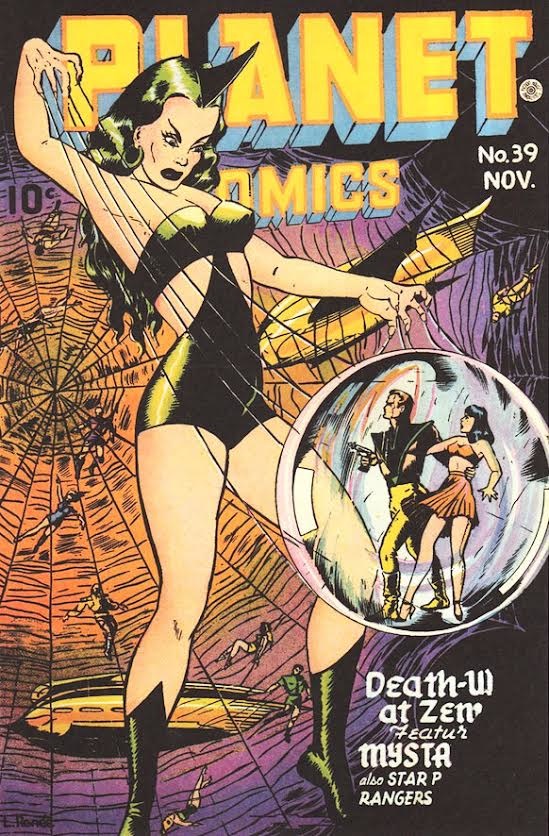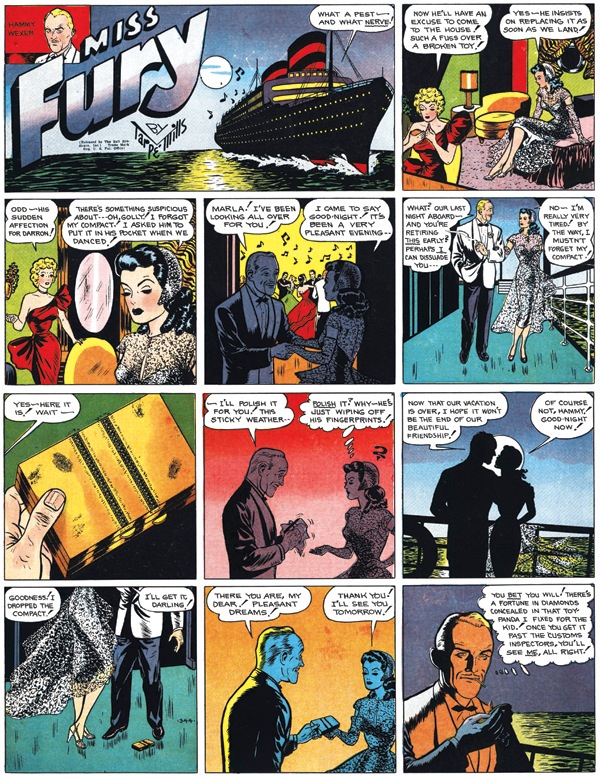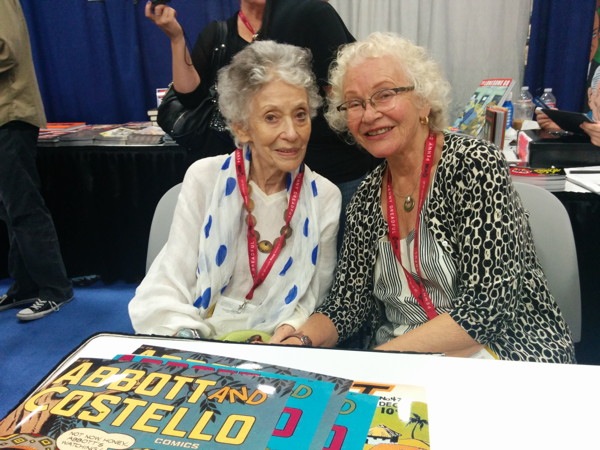
Lisa Hix of Collectors Weekly sat down with Trina Robbins and runs through a few chapters of Robbins’ Pretty in Ink, her third history of women cartoonists. The result is an immense article that could function on a primer on the history of women cartoonists going back more than 100 years, starting with Rose O’Neil:
Soon after her strip appeared, O’Neill became the first female staff artist for the humor magazine “Puck,” where she created many single-panel cartoons. She also fell in love and married a gorgeous and lazy heir named Gray Latham. As a successful illustrator and cartoonist, O’Neill was doing quite well financially, when she could keep her spoiled husband away from her money—he would blow her paychecks on gambling and drinking. She divorced him in 1901, and a year later, married a “Puck” editor named Harry Leon Wilson. While they were both artistically productive during their marriage, Wilson’s moody temperament clashed with O’Neill’s bubbly personality, and he hated that she often talked to him in a baby voice.

And on it goes through Grace Drayton, Fiction House, Tarpé Mills, Hilda Terry, Dale Messick, the rise of the superhero, the undergrounds, and on to Ms Marvel. (That’s a page of Mills Miss Fury above and if you can show me a more effectively colored page of comics in any era I’ll eat the paper its printed on.) If you’ve been following Robbins’ comics history research—as I have—you’ll find it a fairly familiar history, but one that once again reminds us that women have always been making and reading comics—which makes the various periods when it was insisted they don’t—and the burial of any previous history of female participation—all the more troubling and exasperating.
While this piece serves as a nice summation of the best known female comics artists from about the 1890s to the 1970s, it isn’t the whole story. I’m still waiting for the important women behind the scenes to get written into the history books. Folks like Ruth Roche, who wrote comics for the Eisner-Iger studio, and then joined Iger as partner after Eisner left. While not negating the importance of Will Eisner to comics history, the studio was then known as the Roche-Iger Studio and that’s gotta count for something. Roche was such a seminal figure in comics that Trina Robbins and Catherine Yronwode dedicated their book, Women in the Comics, to Roche…in 1985!
I’ve mentioned romance writer and DC editor Dorothy Woolfolk a few times here; surely her story must be an interesting one. Or Helen Meyer, the most successful comics publisher of all times in the US. As editor of Dell Comics she was not only one of the most powerful women in comics, but in all of publishing. Meyer testified in front of the Kefauver Commission, and while Bill Gaines delivered a legendarily painful performance, hers was polished and professional, even if she was willing to throw horror (and freedom of expression) under the bus.
Anyway, these three women and more are beginning to get mainstreamed into the pages of orthodox comics history. But even in researching this brief blog post, I was struck by how Sisyphean the struggle of women is. In Roche’s bio she’s called a pioneer, even though O’Neill and Brinkley were making comics a mere 30 years prior. It’s amazing how just about every woman becomes a “pioneer,” no matter how many have done the same thing before. Perhaps in the modern era of massive achievement by female cartoonists we can admit that they aren’t the first, and they won’t be the last.
Hix’s article ends sweetly with Robbins signing at this years SDCC with Lily Renee, another one of the Fiction House lady squad…I can’t improve on it so I’ll swipe it, with a photo taken for The Beat by Bruce Lidl.






My tribute to Robbins:
“Vampirella
“Kissed a fella
“Left a wound that
“Oozed pus-yellow.”
“Yella.” Dang it.